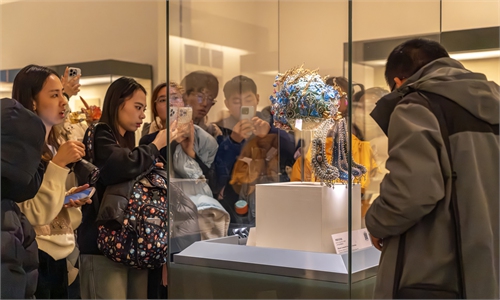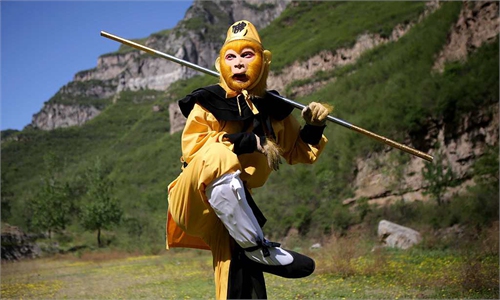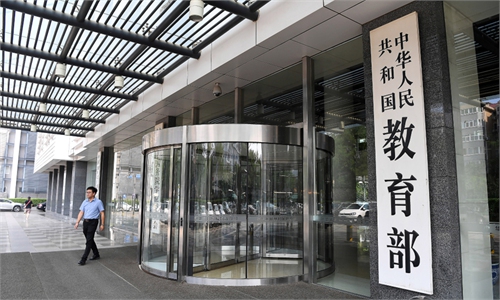ARTS / CULTURE & LEISURE
Global scientists impressed by synergy of technology and heritage, give nod to nurturing smart development of culture
Tech empowers tradition
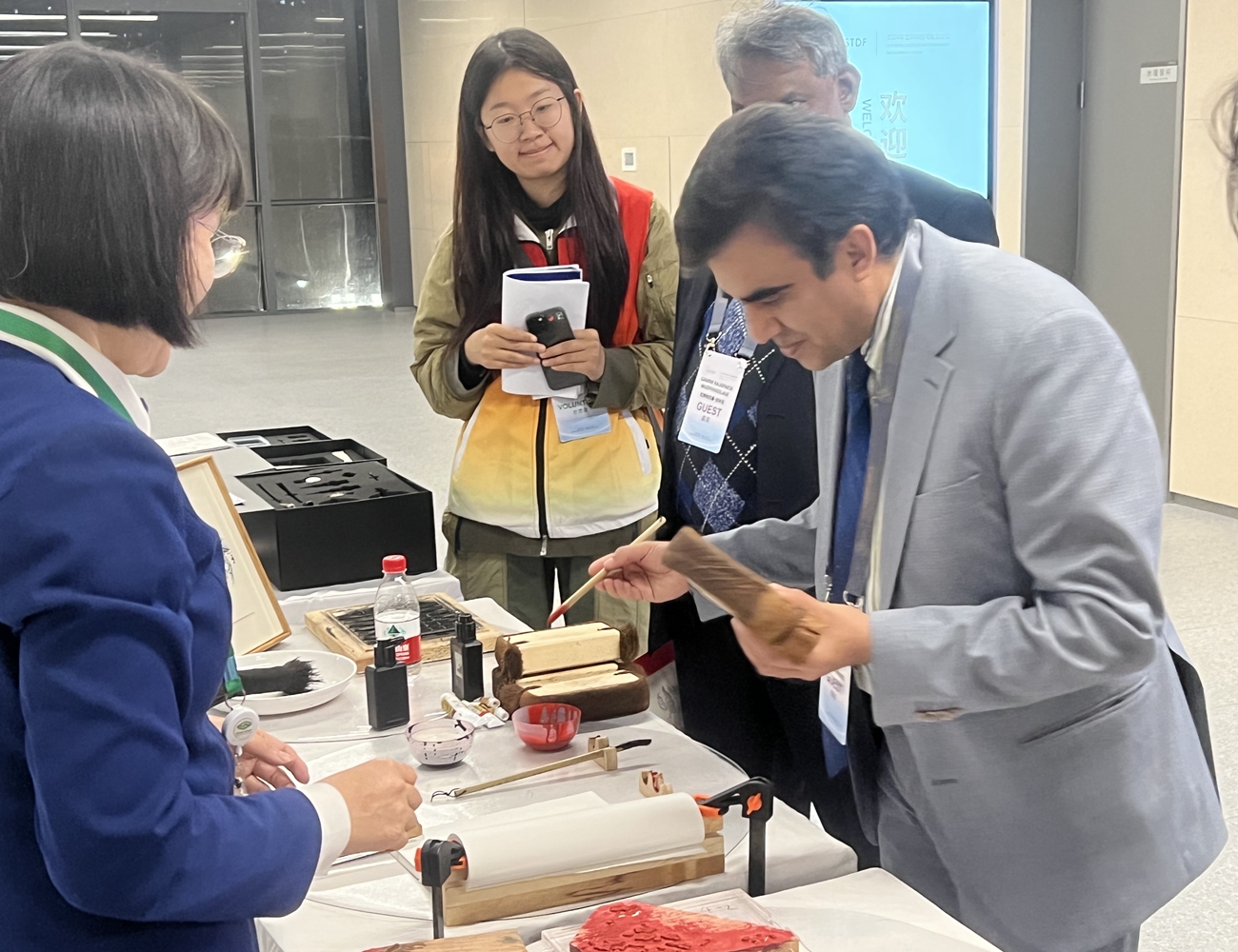
A foreign guest experiences the woodblock watermark technique at the 2024 World Science and Technology Development Forum in Beijing. Photo: Courtesy of WSTDF
The 2024 World Science and Technology Development Forum (WSTDF), hosted by the China Association for Science and Technology in Beijing from Tuesday to Thursday, was attended by hundreds of scientists and representatives from around the globe, highlighting China's commitment to fostering international exchanges in science, technology, and culture.As attendees made their way to the welcome dinner on Tuesday, they were captivated by exhibitions lining the corridor, featuring traditional Chinese intellectual toys such as tangrams, the nine-link puzzle, and the Luban lock, alongside the intangible cultural heritage of bamboo paper-making techniques. International guests expressed immense curiosity and admiration for these intricate "Chinese elements," leaving with a profound appreciation for the fusion of scientific and cultural wisdom that has characterized Chinese history.
These traditional intellectual toys exemplify the rich allure of classical Chinese culture and technology. Each item carries a legacy of history and wisdom: Tangrams enhance spatial imagination and creativity; the nine-link puzzle challenges logical thinking and patience; and the Luban lock showcases the exquisite woodworking skills of ancient artisans. The bamboo paper-making technique reflects the ancient Chinese people's innovative use of natural resources and their enduring craftsmanship spirit.
The forum's organizers prepared "small gifts" that embodied traditional Chinese characteristics, including intangible cultural heritage items like Shayan kites, while the exhibition area also featured inkstones and the Xuan paper for Chinese calligraphy. These items served as cultural bridges for international guests. The exhibition area buzzed with international visitors engaging in hands-on activities, which allowed them to take a piece of Chinese culture home.
"This feels more like a warm experience that helps us delve deeper into the journey of understanding Chinese culture," remarked a female scientist from South Africa to the Global Times. Having initially perceived the event as a serious academic gathering, she left with a richer perspective on the forum.
The interplay between technology and culture is evident as technology empowers cultural preservation and innovation. Digital advancements enable the precise recording and safeguarding of precious cultural heritage, protecting it from the ravages of time and environmental factors.
Moreover, technology facilitates the dissemination and promotion of culture. With the aid of the internet, virtual reality, and other innovations, individuals can more easily explore and experience diverse cultures, transcending the constraints of time and space, while allowing cultural charm to flourish. In recent decades, the "Digital Dunhuang" project, VR and metaverse immersive experience spaces, "hyper-realistic" virtual humans, and more new technologies, ideas, and achievements in cultural industries have emerged, showcasing the new-era charm of Chinese culture.
Zhang Yiwu, a professor at Peking University and a national political advisor, asserts that these technological advancements bolster cultural inheritance and innovation, creating new avenues for cultural prosperity.
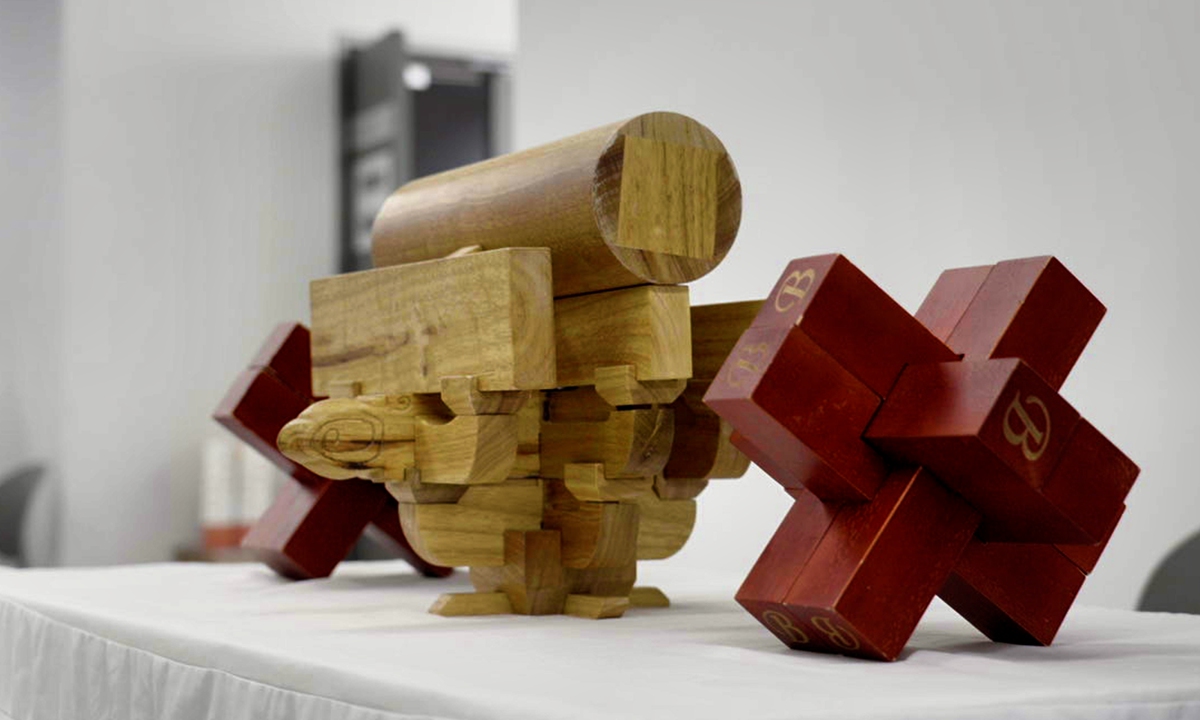
A Luban lock at the 2024 World Science and Technology Development Forum in Beijing Photo: Courtesy of WSTDF
The globally popular Chinese video game "Black Myth: Wukong" has crafted a captivating world of Eastern mythology through digital technology, rapidly bringing ancient Chinese architecture into the limelight. Cultural tourism projects, such as the musical drama "Dunhuang," utilize AR, VR, and other technologies to merge dramatic art with digital innovation, redefining traditional theater boundaries and creating entirely new performance spaces.In November 2023, a platform was established to manage the digital assets of the UNESCO World Heritage Site known as the Mogao Caves in Dunhuang, located in Northwest China's Gansu Province. This platform encompasses digitized data from more than 100 fresco paintings with digital scans from 290 caves and grottoes uploaded. Additionally, 45 painted statues and seven major relic sites have been recreated through 3D reconstruction, and 110 fresco paintings have been digitized and stored. Other valuable materials, including historical documents, art, and old photographs have also been scanned and uploaded.
Experts indicate that technological innovation has transformed the narrative of cultural stories and the presentation of cultural resources. There is a pressing need to promote the deep integration of intelligent technology with traditional Chinese culture to create cultural masterpieces that harmonize thought, artistry, and aesthetics, fostering a new business model for immersive cultural experiences.
Zhang Yan, a professor at the School of Journalism and Communication at Hebei University, emphasized to the media that the deep integration of culture and technology is crucial for enhancing cultural soft power and promoting the high-quality development of the cultural industry. This integration plays a significant role in the high-end and intelligent transformation of traditional cultural sectors. Continuous policy incentives and strategic planning should be implemented to foster a deep integration of innovation chains, industrial chains, talent chains, and capital chains, further advance cultural system reform and promote the mutual prosperity of technology and the cultural industry.
